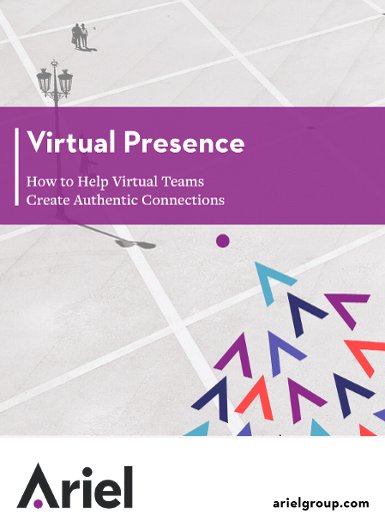Managers Play a Vital Role After Training

Last summer I rented a car to travel around Great Britain. I had never driven this kind of car before, so I had to learn the placement of the various controls. I also had to learn how to drive on the left side of the road. All of that was relatively easy. The hard part was unlearning how to drive on the right. I had to keep telling myself to “stay left.” It’s the reason crosswalks in London have reminders for pedestrians to “look right.” It’s not easy to unlearn the mental habits that no longer serve us. The same thing happens in business. Many of the paradigms we learned in school and built our careers on are either incomplete or ineffective.
– Mark Bonchek, CEO, Shift Thinking
Continued coaching after training is critical. The work doesn’t end when the trainer leaves—participants need to continue to apply what they’ve learned in order for them to leave behind familiar (and often rote) behaviors and for change to stick.
Managers play a vital role in reinforcing this behavior change. In order to do that, your managers first need to know what their team has learned. Your training provider should be able to provide an overview of the program—and managers can also connect one-on-one with the program facilitator or account manager to ask for tips to constructively enforce the specific content. Once your managers are doing this, have them follow these steps to help their team’s training stick.
Watch and listen
Have your managers ask their team about the workshop and what they will do differently now.
Articulating what they’ve learned will help to reinforce it, and will hold them accountable. Whenever possible, have managers review their team’s work one-on-one afterward. Your managers should be open to questions and give their team personalized follow-up suggestions or goals.
Then, managers should watch their team in action. They should pay attention the next time their team member delivers a presentation to a stakeholder or advises a client. Then share positive feedback first, followed by constructive feedback. To make the behavior more repeatable the next time, managers should let their team member make the changes right away and try again.
Give feedback right away
Spontaneous praise is one of the top tools for engaging employees. When your managers notice that a team member is doing something great, they should acknowledge them right away. This is especially important when it comes to changing behaviors from new training: if an employee immediately feels improvement based on a development opportunity your organization provided, it’s twice the win.
On the other end of the spectrum, it’s important to give tough feedback right away as well, but in private. Your managers shouldn’t wait for weekly meetings or an employee’s quarterly review. (They can always ask individual team members how they receive feedback best, too.)
Work with your managers to create a plan for developing consistent processes and outcomes for feedback. Help them map out milestones for their team so that they remember to incorporate learning into annual reviews.
Start with specific, positive observations…
Personalized, positive reinforcement is one of the best ways to make learning stick. Acknowledge the changes in their work and what they’re doing well. Be specific. “Great job” doesn’t help much, but this does: “Great job getting right to the point at the beginning of your email and setting clear deadlines for that project.”
…then share constructive feedback
When telling someone what to work on, your managers should focus on one or two things at a time. And they should focus on behavior, not feelings. For example, “I had a hard time hearing you during your presentation. Could you try again, this time projecting your voice?” This addresses a specific behavior, whereas “You came across as timid,” feels like a personal insult.
When possible, have your managers share a personal story about a time they struggled with a similar problem. Showing vulnerability makes it more of an “us” issue, rather than a “you” issue.
Another simple thing to employ is using polite, positive language like “please” and “thank you” liberally. Feedback is hard to receive—even a small thing like acknowledging their team’s effort will help: “Thank you for your dedication to developing yourself,” goes a long way.
Help your teams teach themselves
While offering specific feedback is an important first step, the ultimate goal is for your managers to help their team members learn to identify and correct issues on their own.
Managers can lead them to self-realization with questions like “How do you think that client meeting went? Is there anything you would change about your presentation, looking back?” The questions should be open ended and evoke self-reflection.
Another step is to provide feedback and let the team do the work. For example, remind them to keep emails concise and put the most important information first when writing—but don’t edit their writing for them.
They can also ask their team members to keep each other on track by encouraging each other to remember what they learned.
Remember the big picture
It’s difficult for managers to balance immediate priorities and get their work done while investing extra time giving feedback. Help them remember that supporting their team’s growth means less work and worry for them in the long run.
Once their team consistently applies the principles they’ve learned, your managers will spend less time correcting, and more time on coaching them. They’ll be more effective, save time, and achieve better results, together.
Start today
Many of our clients choose to take advantage of our Program Reinforcement Coaching, and if you’re interested in learning more about that, we’re happy to answer your questions.
The most important thing that our clients do is help their teams apply and continually practice what they’ve learned. Proper reinforcement techniques ensure that training is as effective as possible, and better results mean a better return on your training investment.
If you have questions about what you read or want to learn more, get in touch today.
